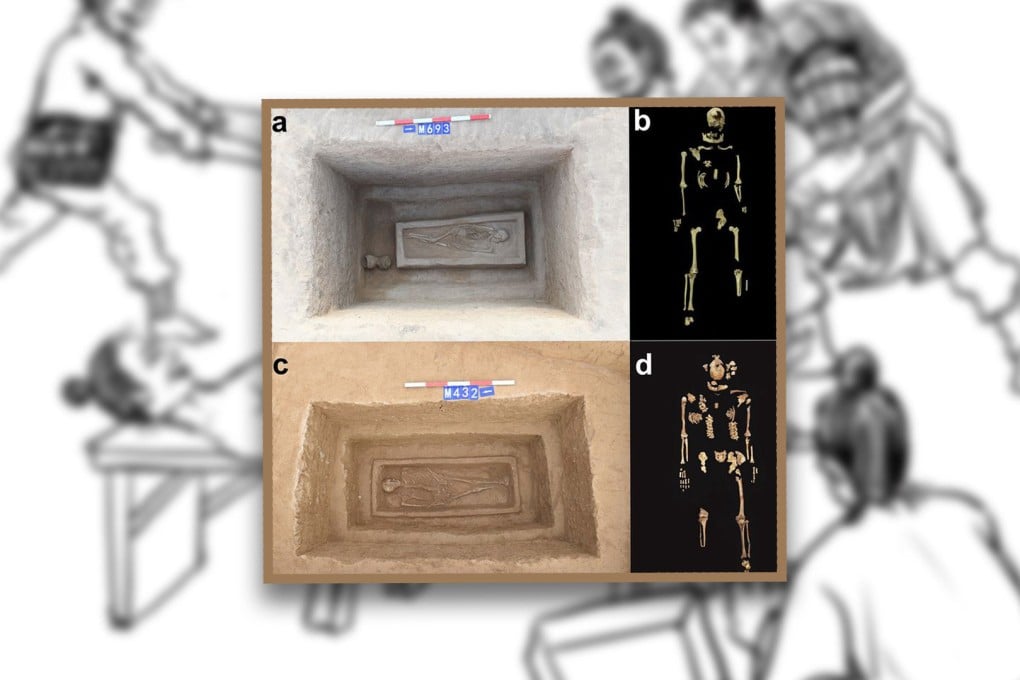China’s 2,500-year-old skeletons with legs chopped off may be elites who received ‘cruel’ punishment in ancient times
- The two victims were likely low-level officials whose fates may have been intertwined
- Penal amputation was so common that there was a Chinese idiom about affordable shoes

Thousands of years ago in ancient China, felonies were not simply punished with a stint in jail, but serious crimes often entailed the amputation of a limb, specifically legs.
This harsh culture of punishment, known as yue, disciplined people for various crimes, such as desertion from duties, stealing, or defrauding the monarchy. It was also used in lieu of the death penalty.
Yue punishment was not relegated to the peasantry, and a study published in Archaeological and Anthropological Sciences on March 16 detailed how two members of the upper class from the Zhou dynasty (1050-221 BC) in central China’s Henan province were plausibly subjected to yue punishment.
“The sign of punishment by amputation and signs of good post-punishment recovery reflects a well-established amputation protocol, including the post-execution nursing and patient management to facilitate survival and recovery,” Qian Wang, a co-author of the study and a professor at the Department of Biomedical Sciences at Texas A&M University told the Post.
The bones suggested that one man had his right leg removed and the other his left, which could indicate that they were convicted of different crimes. Right leg amputations were administered for felonies deemed more serious than those of left leg amputations. The team also hinted that their fates may have been intertwined.
The existing bones showed signs of a managed healing process, indicating that the lower leg bones were not simply lost to time. Additionally, the top parts of the leg showed evidence that the cuts were clean, suggesting they were not made by repeated blows from a weapon but rather a managed medical procedure.